#the other freud: religion culture and psychoanalysis
Explore tagged Tumblr posts
Text
For Lacan, human experience of reality is always symbolized in one form or another, whereas the real is known only negatively, indirectly, and inferentially. The real parallels Kant’s noumenal or Ding an sich in having both an internal and external status, and in being apprehended only as a necessary postulate. Lacan also shares the view of neo-Kantian thinkers such as Ernst Cassirer that mediated, phenomenal experience is shaped by variable cultural constructs and symbolic forms. Lacan emphasizes that reality is known only through language and the real is encountered only as it intrudes into language systems. This means that, while there is always a category or register of the real that is inexhaustible, its contents (as it were) are not fixed. Lacan writes: one can only think of language as a network, a net over the entirety of things, over the totality of the real. It inscribes over the plane of the real this other plane, which we here call the plane of the symbolic. More pointedly, Lacan argues that speech “introduces the dimension of truth into the real.” These arguments push psychoanalytic cultural inquiry away from a positivist model based on the quest for underlying empirical truth, and towards issues of the nature and function of symbolic resources.
The Other Freud: religion, culture and psychoanalysis by James J. DiCenso
#james j. dicenso#the other freud: religion culture and psychoanalysis#fragments#language#communication#jacques lacan#transcendence#reality#truth
4 notes
·
View notes
Text

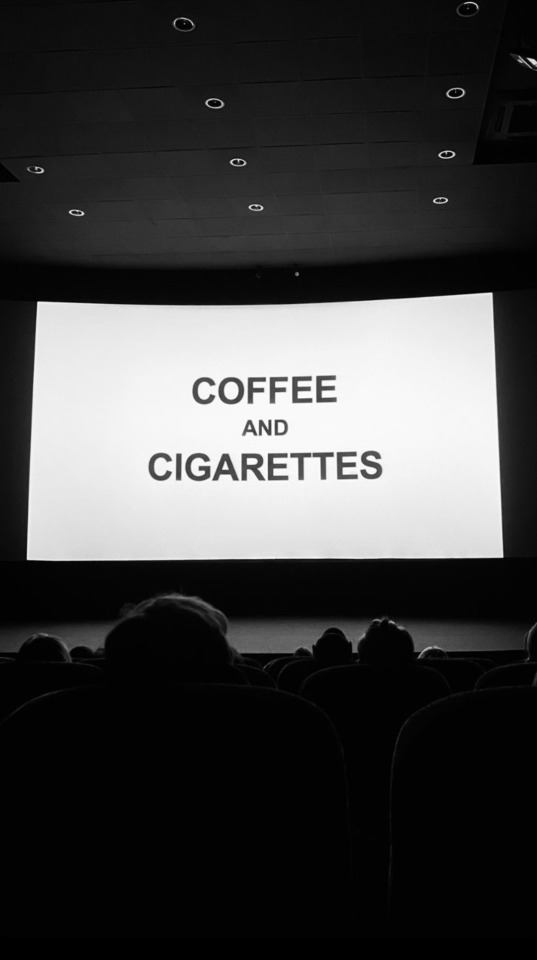
the second sex ; simone de beauvoir | part one
‘the second sex’ is a treatise on female autonomy. widely regarded as the blueprint for the second wave of feminism, this 900-page body of theory remains one of the most influential texts for women all over the globe. its impact is infinite, and beauvoir’s theory is masterfully cogent.
there’s a lot in here to reflect on and absorb. i’ve been tackling this absolute brick of a book by consuming 10 pages a day and allowing myself to really ruminate and sit with what beauvoir is putting out there. taking this book in small increments was definitely the way to go
simone de beauvoir begins by grappling with the question, ‘what is a woman?’ - an impossible question. woman is an ideal. a social reality and confinement the man constructs that pitches women in opposition to him as “the other”. womanhood is the condition in which a woman finds herself confirming a regulated hierarchy. however, beauvoir begins by answering this question through the biological. woman is a ‘womb, an ovary’. man reduces women to nature; they are mothers and reproductive catalysts. like the spider, she castrates and cannibalises; she consumes and eats men. beauvoir deconstructs the biological and the ways in which man has attributed inferiority to the natural biological difference between sexes.
biology, however, is not the foundation for womanhood. although it informs feminine existence, it isn’t the basis of gendered alterity and power disparity. beauvoir acknowledges biological subjugation while simultaneously stating that it is not reason enough for why women are the Other.
the question of ‘what is a woman?’ morphs into ‘what has humanity made of the human female?’ we must examine woman as a complete body, not in parts.
the concept of woman is examined from various schools of thought. from psychoanalysis - which is quickly proven insufficient due to freud’s misogynistic and male-oriented examination of sexual development, which is then generalised to women - to historical materialism and the role that economic value plays in female existence. beauvoir discusses engels - though classism is deeply connected to the disparity between sexes, it is not the origin of patriarchal oppression. female subordination pre-exists class divides. where the proletariat desires to erase class divisions, women do not want to be erased. we simply want to be registered in all forms. although the abolition of private property and class divisions is desirable, it will not ensure female liberation. and so, engels and marxism fail women.
this leads to a deconstruction of human history and the ways in which women were sacrificed on man’s journey for fulfilment and nourishment. as man went to hunt and build tools, women were frequently resigned to motherhood. as man conquer the world, women are left to watch from the sidelines. by dominating nature, man triumphs over woman. women become possessions like land. he is order and accomplishment; she is mystery and chaos.
as the socio-political landscape alters, the female condition continues to deteriorate. women face extreme abuse within the workforce, all for minuscule pay (and gender wage gaps DO still exist). this worsens with religion. simone de beauvoir delves into an array of theological beliefs - christianity, islam, and judaism being central focuses - and highlights the ways that each religion fails women. she also accounts for various cultural practises across the globe (from india to the mediterranean). this is very much a body of text that registers various different cultures and the nuances of each, respectively. i wish it reflected more on the nuances of non-white women’s existence within the western world, however.
i’ll end today’s overview with the most impactful line from this section for me - ‘women’s entire history has been written by men’. the problem of women has always been the problem of men. ‘it is not women’s inferiority that has determined their historical insignificance: it is their historical insignificance that has doomed them to inferiority’.
with man lies the onus for female suffering.
#the second sex#simone de beauvoir#reading update#literature aesthetics#books#book#bookish#bookblr#bookworm#bookstagram#dark academia#booklover#books and libraries#studyblr#study space#academia#study hard#study#movie#film#coffee and cigarettes#annotations#annotated books#cinema#beige#minimalism#feminist theory#feminism#studying#essay
80 notes
·
View notes
Photo
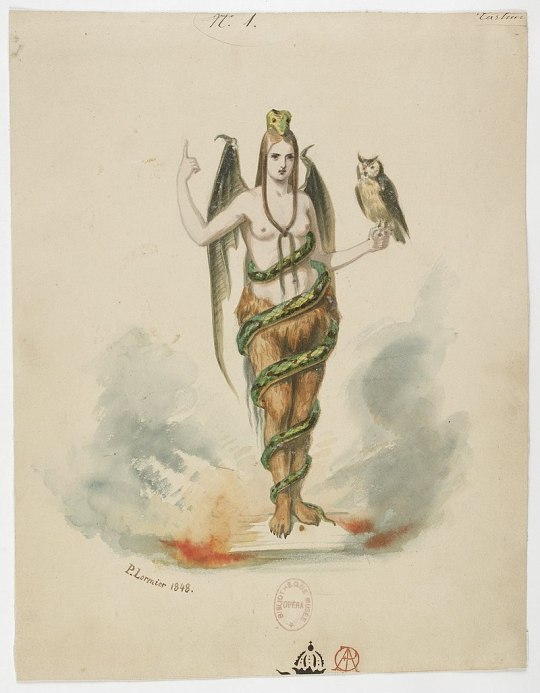
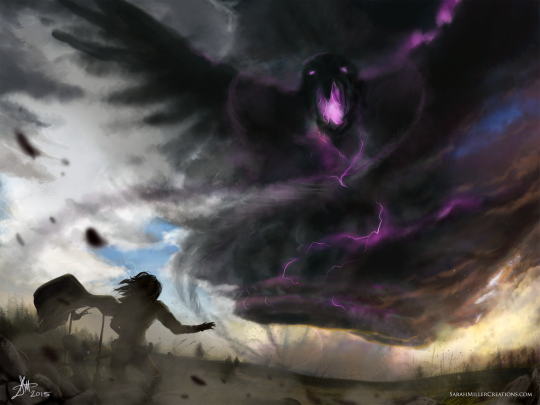
The Ala demon and Ardat Lili [Babylonian mythology; Mesopotamian mythology]
Hailing from ancient Mesopotamian stories, the Ala was described as a floating, amorphous cloud, and like many other evil entities, it was mainly active at night. This evil, cloud-like monster would stalk the streets of human settlements in search for a victim. After choosing someone to haunt, it would enter their house without difficulty and envelop the sleeping victim. Those who have been attacked by these creatures tend to have difficulty falling asleep, often lose their appetite and also develop general depression.
But the Ala demon also had a very particular effect on its victims: it usually attacked sleeping men and would cause them to ejaculate in their sleep. As such, it is likely that the myth of the Ala arose as a way to explain wet dreams. It’s actually not alone in that regard: in Babylonian mythology, the Ardat Lili – which means ‘maiden of the night’ – was another demon or creature that caused sleeping men to ejaculate. These female spirits would approach and arouse men at night. They were also known to ‘satisfy themselves’ with sleeping men, thus explaining the wet spot in their bed.
Supposedly (though I am not entirely certain about this), the Ardat Lili were the undead ghosts of human women who died as virgins. Since they never had the opportunity to experience sex during their lifetime, they would haunt the world of the living and seek out sleeping men.
Sources: Bane, T., 2014, Encyclopedia of Demons in World Religions and Cultures, McFarland, 416 pp. Jastrow, M., 1893, The Religion of Babylonia and Assyria, Handbooks on the History of Religions Volume II, Ginn & Company, 782 pp. Pick, D. and Roper, L., 2004, Dreams and History: the interpretation of dreams from Ancient Greece to modern psychoanalysis, 289 pp. Citing from ‘Geller, M., 1997, Freud, Magic and Mesopotamia: How the Magic Works, Folklore, 108, p.3’ (image 1: ‘Infernal Apparition’ by Paul Lormier, 1848. This image is often associated with the Ardat Lili spirits but remember it was drawn much later) (image source 2: ‘air elemental’ by SarahMillerCreations on Deviantart. I thought it fit the description of an evil, cloud-like entity)
#Babylonian mythology#Mesopotamian mythology#undead#spirits#demons#ghosts#creatures#mythical creatures
61 notes
·
View notes
Photo

(via The Denial of Death - Wikipedia)
The Denial of Death is a 1973 book by American cultural anthropologist Ernest Becker. The author builds on the works of Søren Kierkegaard, Sigmund Freud, Norman O. Brown, and Otto Rank to discuss the psychological and philosophical implications of how people and cultures have reacted to the concept of death. The author argues most human action is taken to ignore or avoid the inevitability of death. It was awarded the Pulitzer Prize for General Nonfiction in 1974, two months after the author's death. It is the main work responsible for the development of terror management theory.
The premise of The Denial of Death is that human civilization is ultimately an elaborate, symbolic defense mechanism against the knowledge of our mortality, which in turn acts as the emotional and intellectual response to our basic survival mechanism.
...since humanity has a dualistic nature consisting of a physical self and a symbolic self, we are able to transcend the dilemma of mortality by focusing our attention mainly on our symbolic selves...
This symbolic self-focus takes the form of an individual's "causa sui project," (sometimes called an “immortality project,” or a “heroism project”). A person’s "causa sui project” acts as their immortality vessel, whereby a person creates meaning, or continues to create meaning, beyond their own life-span. ... In other words, by living up to (or especially exceeding) cultural standards, people feel they can become part of something eternal: something that will never die as compared to their physical body. This, in turn, gives people the feeling that their lives have meaning, a purpose, and significance in the grand scheme of things i.e. that they are “heroic contributors to world life” engaged in an “immortality project.”
Immortality projects are one way that people manage death anxiety. Some people, however, will engage in hedonic pursuits like drugs, alcohol, and entertainment to escape their death anxiety - often to compensate for a lack of “heroism” or culturally-based self-esteem - resulting in a lack of contribution to the “immortality project”. Others will try to manage the terror of death by “tranquilizing themselves with the trivial” i.e. strongly focusing on trivial matters and exaggerating their importance — often through busyness and frenetic activity.
... Humanity's traditional "hero-systems", such as religion, are no longer convincing in the age of reason. Becker argues that the loss of religion leaves humanity with impoverished resources for necessary illusions. Science attempts to serve as an immortality project,
...Becker argues that the conflict between contradictory immortality projects (particularly in religion) is a wellspring for the violence and misery in the world caused by wars, genocide, racism, nationalism and so forth since immortality projects that contradict one another threaten one’s core beliefs and sense of security.
Concepts and ideas
... Creativity Like the schizophrenic, creative and artistic individuals deny both physical reality and culturally-endorsed immortality projects, expressing a need to create their own reality. The primary difference is that creative individuals have talents that allow them to create and express a reality that others may appreciate, rather than simply constructing an internal, mental reality.
...
The Denial of Death has been praised for its post-Freudian approach to psychoanalysis, and has been criticized for its reductive depictions of mental health and humanity.
#denial of death#covid#behavior#psychology#causa sui project#immortality project#death anxiety#creativity#mental health
13 notes
·
View notes
Video
youtube
Studies on the book PSYCHOLOGY OF THE UNCONSCIOUS, Carl Gustav Jung
Ah, you are interested in "Unconscious Psychology" by Carl Gustav Jung! It is a fundamental work for wanting to delve deeper into analytical psychology.
This book, published for the first time in 1916, marks a breaking point for Jung with Freud's psychoanalysis, as he maintains a close relationship. Jung disagreed on some points with Freudian theory, mainly with the emphasis placed on sexuality as the main driving force of the psyche.
In "Psicologia do Unconsciente", Jung presents his own ideas about the unconscious, exploring concepts such as:
Personal unconscious: Contém as repressed and isolated experiences of the individual. It is like a repository of complexes, which are sets of ideas and emotions charged with psychic energy.
Collective unconscious: Here is Jung's great contribution! It proposes the existence of an unconscious shared by all humanity, composed of archetypes, which are only universal images and symbols present in myths, dreams and religions. Some examples of archetypes are Persona, Shadow, Anima and Animus.
Jung's work is complex and rich in details. He delves into the analysis of dreams, myths and symbols, seeking to understand the human psyche in its entirety. "Unconscious Psychology" is an invitation to a deep journey into the interior of oneself and human culture.
To help you delve deeper, don't be afraid, some tips:
Read the book carefully: Jung's language can be a little dense, so set aside time to really understand the ideas. Look for other works by Jung: "O Eu e o Inconsciente" and "Aion" are the best options to continue your studies.
Explore the concepts of archetypes and complexes: They are based on Jungian psychology and will help you better understand yourself and the world around you.
Consider Jungian analysis: If you identify with Jung's ideas, you may benefit from therapy with a Jungian analyst.
Name-I know that "Psicologia do Unconsciente" is just an entry portal to the vast universe of Jungian psychology. I hope you enjoy reading and are inspired by Jung's ideas!
0 notes
Text
NE - Naked Emperor Newsletter
Nov 29, 2024
Remember to add your book recommendations in the comments below.
Today’s book is:
Things Hidden Since the Foundation of the World by René Girard
An astonishing work of cultural criticism, this book is widely recognized as a brilliant and devastating challenge to conventional views of literature, anthropology, religion, and psychoanalysis. In its scope and interest it can be compared with Freud's Totem and Taboo, the subtext Girard refutes with polemic daring, vast erudition, and a persuasiveness that leaves the reader compelled to respond, one way or another.
This is the single fullest summation of Girard's ideas to date, the book by which they will stand or fall. In a dialogue with two psychiatrists (Jean-Michel Oughourlian and Guy Lefort), Girard probes an encyclopedic array of topics, ranging across the entire spectrum of anthropology, psychoanalysis, and cultural production.
Girard's point o departure is what he calles "mimesis," the conflict that arises when human rivals compete to differentiate themselves from each other, yet succeed only in becoming more and more alike. At certain points in the life of a society, according to Girard, this mimetic conflict erupts into a crisis in which all difference dissolves in indiscriminate violence. In primitive societies, such crises were resolved by the "scapegoating mechanism," in which the community, en masse, turned on an unpremeditated victim. The repression of this collective murder and its repetition in ritual sacrifice then formed the foundations of both religion and the restored social order.
How does Christianity, at once the most "sacrificial" of religions and a faith with a non-violent ideology, fit into this scheme? Girard grants Freud's point, in Totem and Taboo, that Christianity is similar to primitive religion, but only to refute Freud―if Christ is sacrificed, Girard argues, it is not because God willed it, but because human beings wanted it.
The book is not merely, or perhaps not mainly, biblical exegesis, for within its scope fall some of the most vexing problems of social history―the paradox that violence has social efficacy, the function of the scapegoat, the mechanism of anti-semitism.
You can buy the book here (Amazon link).
1 note
·
View note
Text

The pharaoh Akhenaten, who ruled Egypt in the mid-fourteenth century BCE, has been the subject of more speculation than any other character in Egyptian history. Often called the originator of monotheism and the world's first recorded individual, he has fascinated and inspired both scholars of Egyptology and creative talents as diverse as Sigmund Freud and Philip Glass. This provocative biography examines both the real Akhenaten and the myths that have been created around him. It scrutinises the history of the pharaoh and his reign, which has been continually written in Eurocentric terms inapplicable to ancient Egypt, and the archaeology of Akhenaten's capital city, Amarna. It goes on to explore the pharaoh's extraordinary cultural afterlife, and the way he has been invoked to validate ideas as diverse as psychoanalysis, racial equality and fascism. Dr Montserrat makes the point that our view of Akhenaten has never been based purely on historical or archaeological knowledge, but is a cultural hallucination, influenced by western desires about ancient Egypt and modern struggles for legitimation and authority. Combining up-to-date historical synthesis with extensive new archival research, Akhenaten: History, Fantasy and Ancient Egypt is the first book to assess critically why the archaeology of ancient Egypt continues to fascinate. Theoretically astute and engagingly written, and illustrated with many striking images never previously published, it will appeal to anyone with an interest in Akhenaten or in the archaeology of ancient Egypt.
Table of Contents
Outline Chronology; Acknowledgments; Abbreviations and Conventions; Chapter 1 Akhenaten in the Mirror; Chapter 2 Histories of Akhenaten; Chapter 3 The Archaeologies of Amarna; Chapter 4 Protestants, Psychoanalysts and Fascists; Chapter 5 Race and Religion; Chapter 6 Literary Akhenatens; Chapter 7 Sexualities; Chapter 8 Epilogue;
Source: https://www.routledge.com/Akhenaten-History-Fantasy-and-Ancient-Egypt/Montserrat/p/book/9780415301862

Dominic Monserrat (1964 – 2004) was a British Egyptologist, papyrologist, and classicist.
This book is a bit old (2000), but I think that it maintains its interest. Now, my point of view on Akhenaten is that we should avoid anachronistic projections onto him and that we should try to see and understand him first of all in his Egyptian context. On the other hand, I don’t think that it is illegitimate to see Akhenaten in the broader history and evolution of ideas and, therefore, I don’t think that the question of Akhenaten’s monotheism and of its philosophical potential is irrelevant.
Btw what is written on Akhenaten in some egyptological blogs on this site is from very superficial and silly to gross. People reading this nonsense without background in history and without other sources of information may form totally distorted views on Akhenaten and the Amarna Period.
2 notes
·
View notes
Text
Literature and Philosophy
MA IN LITERARY STUDIES
Literature and Philosophy (EN71021A): Course Outline Spring 2019
Tutor: Julia Ng
Teaching Mode: 2-hour seminar
Seminar Wednesday 9-11
St James Hatcham G02
NB: Please acquire a print copy of Walter Benjamin’s Origin of German Tragic Drama, trans. J. Osborne (Verso, 1998/2009), as we will be studying this text in its entirety. Other materials for this course will be posted to the course’s learn.gold page.
Week 1, Wednesday 16
th
January – Introduction; “intention” in Brentano and Husserl
Introductory discussion
Franz Brentano, “The Distinction between Mental and Physical Phenomena,” in Psychology from an Empirical Standpoint [1874], trans. A. C. Rancurello, D. B. Terrell and L. L. McAlister (London: Routledge & Kegan Paul, 1995), Bk. 2, chap. 1, pp. 59-77.
Edmund Husserl, “Philosophy as a Rigorous Science," in Phenomenology and the Crisis of Philosophy, trans. Quentin Lauer (Harper & Row, 1965), section on “Naturalistic Philosophy,” pp. 79-122.
Week 2, Wednesday 23th January – Husserl
Edmund Husserl, “Philosophy as a Rigorous Science," in Phenomenology and the Crisis of Philosophy, trans. Quentin Lauer (Harper & Row, 1965), excerpt from “Historicism and Weltanschauung Philosophy,” pp. 122-129.
Edmund Husserl, Ideas Pertaining to a Pure Phenomenology and to a Phenomenological Philosophy, I, trans. F. Kersten (Martinus Nijhoff, 1983), §§87-90, 93-95.
Week 3, Wednesday 30th January – Benjamin
Benjamin, OGT, “Epistemo-Critical Prologue”
References
Plato, Symposium
Scheler, “On the Tragic”
Wek 4, Wednesday 6th February – Benjamin
Benjamin, OGT, “Trauerspiel and Tragedy,“ I
References
Schmitt, Political Theology
Gryphius, Leo Armenius
Calderon, Life is a Dream
Week 5, Wednesday 13th February – Benjamin
Benjamin, OGT, “Trauerspiel and Tragedy,“ II
References
Nietzsche, The Birth of Tragedy
Lukács, Soul and Forms
Rosenzweig, The Star of Redemption
Scheler, “On the Tragic”
Benjamin, “Fate and Character”; “Toward the Critique of Violence”
Week 6, Wednesday 20th February
Tutorial Week – No seminar
Week 7, Wednesday 27th February – Benjamin
Benjamin, OGT, “Trauerspiel and Tragedy,“ III; „Allegory and Trauerspiel,“ I
References
Shakespeare, Hamlet
Panofsky and Saxl on Dürer’s Melancholia I
Giehlow on Melancholia I; The Humanist Interpretation of Hieroglyphs
Warburg
Freud, “Mourning and Melancholia”
Week 8, Wednesday 6th March – Benjamin
Benjamin, OGT, “Allegory and Trauerspiel,“ II and III
References
Benjamin, “On Language as Such and on the Language of Man”; “The Role of Language in Trauerspiel and Tragedy”; “Trauerspiel and Tragedy”
Gryphius, Leo Armenius
Week 9, Wednesday 13th March – Adorno
Adorno, “The Actuality of Philosophy” (May 2, 1931), in Telos 31 (1977), 120-133.
Adorno, “The Idea of Natural History” (1932), in Telos 60 (1984), 111-124.
Week 10, Wednesday 20th March – Adorno
Adorno, “III.2 World Spirit and Natural History,” in Negative Dialectics, trans. E.B. Ashton, Continuum, 1973, pp. 300-360.
Week 11, Wednesday 27th March – Conclusion
General discussion
Preparatory Reading
Gryphius, Leo Armenius
Calderon, Life Is A Dream
Shakespeare, Hamlet
Hofmannsthal, The Tower
Further Reading
Benjamin
On Language as Such and on the Language of Man (1916)
The Role of Language in Trauerspiel and Tragedy (1916)
Trauerspiel and Tragedy (1916)
Fate and Character (1919)
Toward the Critique of Violence (1921)
Calderon's El mayor monstrue, los celos and Hebbel's Herodus and Mariamne (1923)
General
Adorno, Theodor. "Portrait of Walter Benjamin," in: Prisms. Trans. Samuel and Shierry Weber. MIT Press, 1981.
Adorno, Theodor. Against Epistemology: A Metacritique. Trans. Willis Domingo. Oxford: Blackwell, 1982.
Adorno, Theodor, and Walter Benjamin. The Complete Correspondence, 1928-1940. Ed. Henri Lonitz. Trans. Nicholas Walker. Cambridge, MA: Harvard UP, 1999.
Agamben, Giorgio. Homo Sacer: Sovereign Power and Bare Life, Stanford UP, 1998.
Cascardi, Anthony J. "Comedia and Trauerspiel: On Benjamin and Calderón." Comparative Drama 16:1 (1982), 1-11.
Cobb-Stevens, Richard. “Husserl on Eidetic Intuition and Historical Interpretation,” American Catholic Philosophical Quarterly 66 (1992): 261–75.
Comay, Rebecca. "Mourning Work and Play," in Research in Phenomenology 23 (1993), pp. 105-130.
Drummond, John. “Husserl on the Ways to the Performance of the Reduction,” Man and World 8 (1975): 47–69.
Drummond, John. “The Structure of Intentionality,” in The New Husserl, ed. D. Welton (Bloomington: Indiana University Press, 2003), 65–92.
Derrida, Jacques. "Force of Law."
Fenves, Peter. "Marx, Mourning, Messianity," in: Hent de Vries/Samuel Weber (Hg.): Violence, Identity and Self-Determination, Stanford, 1997, 253–270.
Fenves, Peter. "Tragedy and Prophecy in Benjamin’s 'Origin of the German Mourning Play,'" in: Arresting Language. From Leibniz to Benjamin, Stanford UP, 2001, 227–248.
Foster, Roger. Adorno: The Recovery of Experience. SUNY Press, 2007.
Freud, Sigmund. "Mourning and Melancholia," The Standard Edition of the Complete Psychological Works of Sigmund Freud, XIV. The Hogarth Press, 1957, pp. 237-258.
Friedlander, Eli. "On the Musical Gathering of Echoes of the Voice: Walter Benjamin on Opera and the Trauerspiel." The Opera Quarterly, vol. 21 no. 4 (2005), pp. 631-646.
Geulen, Eva. The End of Art : Readings in a Rumor after Hegel. Stanford University Press, 2006.
Giehlow, Karl, and Robin Raybould. The Humanist Interpretation of Hieroglyphs in the Allegorical Studies of the Renaissance with a Focus on the Triumphal Arch of Maximilian I. Brill, 2015.
Hamacher, Werner. "Guilt History."
Hanssen, Beatrice. Walter Benjamin's Other History : of Stones, Animals, Human Beings, and Angels. University of California Press, 1998.
Hanssen, Beatrice. "Philosophy at Its Origin: Walter Benjamin’s Prologue to the 'Ursprung des deutschen Trauerspiels,'" in: Modern Language Notes 110 (1995), 809–833.
Haverkampf, Hans-Erhard. Benjamin in Frankfurt : Die Zentralen Jahre 1922-1932. Societäts-Verlag, 2016.
Helmling, Steven. "Constellation and Critique: Adorno's Constellation, Benjamin's Dialectical Image." Postmodern Culture 14:1 (2003).
Johnson, Barbara, The Wake of Deconstruction, Cambridge, Mass, 1994.
Johnson, Christopher D. “Configuring the Baroque: Warburg and Benjamin.” Culture, Theory and Critique, vol. 57, no. 2, 2016, pp. 142–165.
Kantorowicz, Ernst H. The King's Two Bodies : a Study in Mediaeval Political Theology. Princeton University Press, 1997.
Klibansky, Raymond; Panofsky, Erwin; Saxl, Fritz. Saturn and Melancholy : Studies in the History of Natural Philosophy, Religion, and Art. Basic Books, 1964.
Lacan, Jacques. "Desire and the Interpretation of Desire in Hamlet," in: Shoshana Felman (ed.): Literature and Psychoanalysis. The Question of Reading: Otherwise, Baltimore, 1982, 11–52.
Lindner, Burkhardt. "Habilitationsakte Benjamin. Über ein 'akademisches Trauerspiel' und über ein Vorkapitel der "Frankfurter Schule" (Horkheimer, Adorno)/"Walter Benjamins's attempt of a Habilitation. On an 'academic Trauerspiel' and on other preliminaries of the "Frankfurter Schule" (Horkheimer, Adorno)." In: Zeitschrift für Literaturwissenschaft und Linguistik 14.53 (1984): 147-166.
Lukács, György. Soul and Form. MIT Press, 1978.
Lukács, György. Theory of the Novel.
Marin, Louis. Food for Thought. Johns Hopkins University Press, 1997.
McFarland, James. “Presentation.” Constellation: Friedrich Nietzsche and Walter Benjamin in the Now-Time of History. Fordham University Press, 2012, pp. 67-102 (Chapter 2).
McLaughlin, Kevin. "Benjamin's Barbarism." The Germanic Review: Literture, Culture, Theory, 81:1 (2006), 4-20.
Menke, Christoph, and James. Phillips. Tragic Play : Irony and Theater from Sophocles to Beckett. Columbia University Press, 2009.
Merback, Mitchell B. Perfection's Therapy : an Essay on Albrecht Dürer's Melencolia I. Zone Books, 2017.
Miller, J. Hillis. »The Two Allegories«, in: Morton Bloomfield (ed.): Allegory, Myth and Symbol, Cambridge, 1981, 355–370.
Mininger, J. D., and Jason Michael Peck. German Aesthetics : Fundamental Concepts from Baumgarten to Adorno. Bloomsbury, Bloomsbury Academic, 2016.
Nägele, Rainer. Theater, Theory, and Speculation: Walter Benjamin and the Scenes of Modernity, Baltimore, 1991.
Newman, Jane O. Benjamin's Library: modernity, nation, and the Baroque. Cornell UP, 2011.
Newman, Jane O. "Tragedy and 'Trauerspiel' for the (Post-)Westphalian Age." In: Renaissance Drama 40 (2012), pp. 197-208.
Newman, Jane. “Enchantment in Times of War: Aby Warburg, Walter Benjamin, and the Secularization Thesis.” Representations, vol. 105, no. 105, 2009, pp. 133-0_4.
Nietzsche, The Birth of Tragedy
Pensky, Max. Melancholy Dialectics: Walter Benjamin and the Play of Mourning. U Mass Press, 1993.
Plato, Symposium.
Rosenzweig, Franz, and Barbara Ellen Galli. The Star of Redemption. University of Wisconsin Press, 2005.
Scheler, Max. "On the Tragic." CrossCurrents 4.2 (1954), 178-191.
Schmitt, Carl, et al. Hamlet or Hecuba : the Intrusion of the Time into the Play. Telos Press, 2009.
Schmitt, Carl. Political Theology : Four Chapters on the Concept of Sovereignty. University of Chicago Press, 2005.
Szondi, Peter. An Essay on the Tragic. Stanford University Press, 2002.
Weber, Samuel. Benjamin's -Abilities. Harvard University Press, 2008.
Willard, Dallas. “The Paradox of Logical Psychologism: Husserl’s Way Out,” American Philosophical Quarterly 9 (1972): 94–100.
Woodfield, Richard (ed.) Art history as cultural history: Warburg's projects. G+B Arts International, 2000.
Learning Outcomes
- You will have a grasp of the place of literature in the modern Continental philosophy tradition.
- You will have a good understanding of how this tradition challenges and transforms Classical philosophical conceptions of literature.
- You will be able to expound and analyse the textual and conceptual styles of the three key thinkers on the course.
- You will have a sound grasp of the literature of and on both the broad relationship between literature and philosophy, and the three specific thinkers addressed on the module.
- You will be able to use the ideas and texts explored in the module to inform your readings in literary and cultural texts.
Assessment Criteria
- Students should show a clear command of traditional conceptions of the literary in the history of philosophy, and of how the modern Continental tradition challenges these.
- Students should show a detailed critical knowledge of at least one of the module’s key thinkers’ ideas.
- Students should show a knowledge and capacity to use a good range of secondary literature on both general issues in the field and on the specific thinkers and texts they address.
- Students should be able to read the relevant texts from both literary critical and conceptual perspectives.
- Students should show an awareness of the relevance of the issues and texts studied on the course to contemporary debates in literary theory.
10 notes
·
View notes
Text
so i’m supposed to work on this presentation about psychoanalysis as a tool to interpret literature and i took it because i’m a masochistic moron every time freud is mentioned online people Hate this dude with a passion, and i more or less know the general gist of his theories but i wanted to like. go deeper
and maybe i’m emotionally damaged not as furious as others are, but i just began the chapter in the book and just the idea of “culture, religion and human relations exist because people need something to distract them from their unfulfilled sexual urges” is, hmm. it’s a bit unfortunate i think
#i often assume that i don't/can't know the whole truth so initially i was like but surely it's not like.... Everything. it must#be 'in certain cases'. right? it must be 'sometimes in certain cases it helps people to share their frustrations via art'#but. but i don't think that's the case.#shut up shrimp
2 notes
·
View notes
Text
Long, unedited text in which I rant about comparative mythology, Joseph Campbell and his monomyth,
Back in 2012 I wanted to improve my fiction writing (and writing in general, because in spite of nuances, themes and audience, writing a fiction and a nonfiction piece shouldn’t be that different) and thus I picked a few writing manuals. Many of them cited the Hero’s Journey, and how important it became for writers – after all Star Wars used and it worked. I believe most of the people reading this like Star Wars, or at least has neutral feelings about it, but one thing that cannot be denied is that became a juggernaut of popular culture.
So I bought a copy of the Portuguese translation of The Hero of a Thousand Faces and I fell in love with the style. Campbell had a great way with words and the translation was top notch. For those unaware, The Hero of a Thousand Faces proposes that there is a universal pattern in humanity’s mythologies that involves a person (usually a man) that went out into a journey far away from his home, faced many obstacles, both external and internal, and returned triumphant with a prize, the Grail or the Elixir of Life, back to his home. Campbell’s strength is that he managed to systematize so many different sources into a single cohesive narrative.
At the time I was impressed and decided to study more and write in an interdisciplinary research with economics – by writing an article on how the entrepreneur replaces the mythical hero in today’s capitalism. I had to stop the project in order to focus on more urgent matters (my thesis), but now that I finished I can finally return to this pet project of mine.
If you might have seen previous posts, I ended up having a dismal view of economics. It’s a morally and spiritually failed “science” (I have in my drafts a post on arts and I’m going to rant another day about it). Reading all these books on comparative mythology is so fun because it allows me for a moment to forget I have a degree in economics.
Until I started to realize there was something wrong.
My research had indicated that Campbell and others (such as Mircea Eliade and Carl Gust Jung, who had been on of Campbell’s main influences) weren’t very well respected in academia. At first I thought “fine”, because I’m used to interact with economists who can be considered “heterodox” and I have academic literature that I could use to make my point, besides the fact my colleagues were interested in what I was doing.
The problem is that this massive narrative of the Hero’s Journey/monomyth is an attempt to generalize pretty wide categories, like mythology, into one single model of explanation, it worked because it became a prescription, giving the writer a tool to create a story in a factory-like pace. It has checkboxes that can be filled, professional writers have made it widely available.
But I started to realize his entire understanding of mythology is problematic. First the basics: Campbell ignores when myths don’t fit his scheme. This is fruit of his Jungian influences, who claim that humanity has a collective unconsciousness, that manifest through masks and archetypes. This is the essence of the Persona games (and to a smaller extent of the Fate games) – “I am the Shadow the true self”. So any deviation from the monomyth can be justified by being a faulty translation of the collective unconsciousness.
This is the kind of thing that Karl Popper warned about, when he proposed the “falseability” hypothesis, to demarcate scientific knowledge. The collective unconsciousness isn’t a scientific proposition because it can be falsified. It cannot be observed and it cannot be refuted, because someone who subscribe to this doctrine will always have an explanation to explain why it wasn’t observed. In spite of falseability isn’t favored by philosophers of science anymore, it remains an important piece of the history of philosophy and he aimed his attack on psychoanalysis of Freud and Jung – and, while they helped psychology in the beginning, they’re like what Pythagoras is to math. They were both surpassed by modern science and they are studied more as pieces of history than serious theorists.
But this isn’t the worst. All the three main authors on myths were quite conservatives in the sense of almost being fascists – sometimes dropping the ‘almost’. Some members of the alt-right even look up to them as some sort of “academic’ justification. Not to mention anti-Semitic. Jung had disagreement with Freud and Freud noticed his anti-Semitism. Eliade was a proud supporter of the Iron Guard, a Romanian fascist organization that organized pogroms and wanted to topple the Romanian government. Later Eliade became an ambassador at Salazar’s Fascist Portugal, writing it was a government guided by the love of God. Campbell, with his hero worship, was dangerously close to the ur-fascism described by Umberto Eco (please read here, you won’t regret https://www.pegc.us/archive/Articles/eco_ur-fascism.pdf).
“If you browse in the shelves that, in American bookstores, are labeled as New Age, you can find there even Saint Augustine who, as far as I know, was not a fascist. But combining Saint Augustine and Stonehenge – that is a symptom of Ur-Fascism.”
Campbell did that a lot. He considered the Bible gospels and Gnostic gospels to be on the same level. Any serious student, that is not operating under New Age beliefs and other frivolous theories like the one that says Jesus went to India, will know there’s a difference between them (even Eliade was sure to stress the difference).
But Campbell cared nothing for it. He disliked the “semitic” religions for corrupting the mythic imagination (which is the source of his anti-Semitism), especially Judaism. When I showed him describing the Japanese tea ceremony to a friend who’s minoring in Japanese studies, she wrote “I’m impressed, he’s somehow managed to out-purple prose the original Japanese”. So, it’s also full of orientalism, treating the East as the mystical Other, something for “daring” Westerners to discover and distillate.
What disturbed…no, “disturbed” isn’t the word that I need in the moment, but what made me feel uncomfortable is that, in spite of all his talk of spirituality, the impression I had of Power of Myth is that I don’t think I’ve ever seen anyone more materialist than him. Not even Karl Marx, founder of the Historical Materialism, was as materialist as Campbell.
At one point in the book, he was asked if he believed in anything and he gave a dismissive reply and said “I want to get experiences.” A man who studied all the myths of the world available, apparently didn’t believe in anything. Is that what spiritual maturity is? A continuous flux of experiences? Being taken by some sort of shamanistic wind like a floating plastic bag?
In nowhere in the interview he talked about virtues. In rebellion with his Catholic childhood, he said that we should go to the confessionary and say “God, I’ve been such a good boy”. Any cursory reading of the Gospel would say otherwise. Wasn’t this exactly Pharisee’s prayer in Luke 18:9-14? While the wasn’t the publican, who went with humility and asked for forgiveness, the one who walked out with an experience? And not only in Christianity, since in Tibetan Buddhism, a tulpa is something you have to kill, not foster like an imaginary friend like in some internet circles, contamined with this obsession with experiences.
The way I came to see Joseph Campbell as a man who was so stuck in his own world that nothing could move him out of it. All he wanted to do was this big experience, but in the end it’s as wide as the ocean, but shallow as a puddle. Even when Campbell speaks about having a “cosmic consciousness”, all that New Age jargon, claiming it’s about people discovering they’re not the center of the universe, it’s still so…self-servicing. It addresses a crowd so obsessed with experiences, but wants nothing to do with anything that requires compromise. He quotes the Hindu concept of maya, that life is an illusion, but I wonder how right he is about it.
I want to share this critique, by a researcher in comic studies: “We do not remember The Night Gwen Stacy Died because Gwen’s death reminds us of our own mortality, ‘the destiny of Everyman’, but because the story exposes the fragility of Spider-Man reader’s fantasies. Even icons can die.”
The exposition of the fragility of myths, especially the Hero’s Journey, never happens in Campbell’s work. It never talks about the potential of myths hindering entire societies, causing strife and causing people who can’t fit to become outcasts. Not even the cruel ones, like the Aztec death cult is treated as sublime, ignoring the fact that the Aztec neighbors helped to Spanish because they had enough of the Aztec myth.
I have changed my article. While I will still write on the hero entrepreneur, I’ll take a more critical view. The focus of the entrepreneur as an individual has many issues, because it ignores the role of public investment (necessary for high risk enterprises, like going to the moon or creating touch screens) and it treats with contempt the worked wage. Cambpell also treated with contempt the “masses”, who cannot be “heroes”. The theory on the entrepreneur is the same, treating the entrepreneur as a hero and the waged workers as lowlifes who have nothing to do, but to work, obey and be paid – to the point it feels like some economists treat strikes as crimes worse than murder. Not only that, but they can exploit the worker (see a book named “Do what you love and other lies about success and happiness”, it could be replaced with “Follow your bliss…”).
Campbell wrote in a time that there was no Wikipedia. So his book was the introduction of myths to a lot of people. It helped it was well-written. He considering his approach apolitical, but it’s clear that’s it’s not exactly like that (though this is a reason why Jordan Peterson failed to become the next Campbell, since he’s also a Jungian scholar, but he tried to become a conservative guru and this was his downfall). And, nowadays, Campbell is still inevitable in the circles that his themes matter, unlike Freud and Jung. Read it, but be aware of its problems, because it has already influenced what you consume.
10 notes
·
View notes
Photo

Theodor Adorno, the famous musical critic and philosopher, once said: “Talent is perhaps nothing other than successfully sublimated rage“, when talking about Freud and the legacy of psychoanalysis. Freud claimed that artists sublimate [fancy term for taking “forbidden” lustful impulses – sexual or aggressive for example – and converting them into another behavior or, in this case; creating art] their desires into their work. Adorno was a bit ambivalent about it all and claimed that this was the case, that it would undermine the potential of the artwork to transcend the artist’s emotional life and challenge the “consolations of affirmative culture”
Now, in order for this to make any sense – the “affirmative culture” bit – we must look at the world as Adorno theorized it: We humans shape the word around us by adding value to objects – we turn them into products. We do this by locking them into shape by reducing their potentiality, the innate ability in any object to be whatever it can be. Now, whilst we humans shape our world by adding value to object, we – in turn – are products of the society that we live in, and as such are products of an historical movement that has formed our society, and us, into what we are. For Adorno this is capitalism – we are living in a world [the western world especially] that is the result of an objectification of nature that has been going on since Antiquity (at the very least). Anyhow: we shape the world in the only way possible to us as the products of a completely capitalist society. If shapes and forms everything we do. Now, “affirmative culture” is one of the ways that the capitalist system to provide us, the individuals or groups of individuals, with ways to handle how to live with conditions that appear to be beyond our apparent control. Religions is one such way, sub cultures – even ones that would seem to be “against” the system; punks, anarchists and so on, are still a part of the system. A modern example would be people that protest capitalism by wearing mass produced Guy Fawkes masks... We are totally encapsulated in the system. Or are we?
Adorno, you see, believed that art had the potential to break through this veil and act as a prism through which we could see the real world behind it all. And that is where we go back to the quote from the very beginning: “Talent is perhaps nothing other than successfully sublimated rage“ – the basis of his system of negative dialectics is a complete and constant critique of everything. Especially of thought and of critique itself. By constantly test and re-test everything we know or think we know – by fighting the urge to be productive we have the possibility to scrape off the varnish and finally see the grains that make up the true world. This talent, this rage, is the friction that drives the grinding. In Adornos drive for critique nothing was sacred: changing traditional religious practices, rituals and artifacts in order to be provocative and seemingly antagonistic would be one way where by reflecting one thing through its negative self potential for change could be released. This could be applied to anything and everything. And it should be. Because we need to look more carefully. Applicable to everything except, though, for fusion jazz and beat poetry, apparently. He really hated fusion jazz and beat poetry. He could find no use for them what so ever.
Personally, I do like beat poetry: “A pain stabbed my heart, as it did every time I saw a girl I loved who was going the opposite direction in this too-big world.” might be one of the most beautiful sentences ever written, and Ginsbergs first stanza (and the hole damned poem – best enjoyed moderate portions) capture the times; and time again: “I saw the best minds of my generation destroyed by madness, starving hysterical naked, dragging themselves through the negro streets at dawn looking for an angry fix [...]”
#Thoughts#i really should be reading Husserl#original photography#original photographers#philosophy#kerouac#adorno
3 notes
·
View notes
Text
The real is that which, at any given time, cannot be integrated into discourse; it “resists symbolization absolutely.” For example, the real designates the givenness of the drives, uncharted and unknown dimensions of external reality, and any internally or externally located experience that cannot be fully or directly narrativized within cultural and personal systems of symbolization. As we have seen, traumatic experiences, by virtue of their negatively overpowering nature, exhibit this quality of being unassimilable in everyday discourse. They leave blank spaces in memory, or produce screens, displacements, and fantasies. At the opposite end of the spectrum, mystical experiences might also be understood as overwhelming the individual’s symbolic discursive resources, giving rise to paradoxical and indirect communications at the boundaries of discourse.
The Other Freud: religion, culture and psychoanalysis by James J. DiCenso
#the other freud: religion culture and psychoanalysis#james j. dicenso#fragments#reality#self#other#transcendence#communication#language#being
1 note
·
View note
Photo

The Monster Theory Reader, by Jeffrey Andrew Weinstock, University of Minnesota Press, 2020. Info: upress.umn.edu.
Zombies and vampires, banshees and basilisks, demons and wendigos, goblins, gorgons, golems, and ghosts. From the mythical monstrous races of the ancient world to the murderous cyborgs of our day, monsters have haunted the human imagination, giving shape to the fears and desires of their time. And as long as there have been monsters, there have been attempts to make sense of them, to explain where they come from and what they mean. This book collects the best of what contemporary scholars have to say on the subject, in the process creating a map of the monstrous across the vast and complex terrain of the human psyche. Editor Jeffrey Andrew Weinstock prepares the way with a genealogy of monster theory, traveling from the earliest explanations of monsters through psychoanalysis, poststructuralism, and cultural studies, to the development of monster theory per se—and including Jeffrey Jerome Cohen’s foundational essay “Monster Theory (Seven Theses),” reproduced here in its entirety. There follow sections devoted to the terminology and concepts used in talking about monstrosity; the relevance of race, religion, gender, class, sexuality, and physical appearance; the application of monster theory to contemporary cultural concerns such as ecology, religion, and terrorism; and finally the possibilities monsters present for envisioning a different future. Including the most interesting and important proponents of monster theory and its progenitors, from Sigmund Freud to Julia Kristeva to J. Halberstam, Donna Haraway, Barbara Creed, and Stephen T. Asma—as well as harder-to-find contributions such as Robin Wood’s and Masahiro Mori’s—this is the most extensive and comprehensive collection of scholarship on monsters and monstrosity across disciplines and methods ever to be assembled and will serve as an invaluable resource for students of the uncanny in all its guises.
Contents: Acknowledgments Introduction: A Genealogy of Monster Theory – Jeffrey Andrew Weinstock 1. Monster Culture (Seven Theses) – Jeffrey Jerome Cohen Part I. The Monster Theory Toolbox 2. The Uncanny – Sigmund Freud 3. The Uncanny Valley – Masahiro Mori 4. Approaching Abjection – Julia Kristeva 5. An Introduction to the American Horror Film – Robin Wood 6. Fantastic Biologies and the Structures of Horrific Imagery – Noël Carroll 7. Parasites and Perverts: An Introduction to Gothic Monstrosity – Jack Halberstam Part II. Monsterizing Difference 8. Monstrous Strangers at the Edge of the World: The Monstrous Races – Alexa Wright 9. Blood, Jews, and Monsters in Medieval Culture – Bettina Bildhauer 10. Horror and the Monstrous-Feminine: An Imaginary Abjection – Barbara Creed 11. The Monster and the Homosexual – Harry Benshoff 12. The Undead: A Haunted Whiteness – Annalee Newitz 13. Intolerable Ambiguity: Freak as/at the Limit – Elizabeth Grosz Part III. Monsters and Culture 14. Monsters and the Moral Imagination – Stephen T. Asma 15. Introduction to Religion and Its Monsters – Timothy Beal 16. The Self’s Clean and Proper Body – Margrit Shildrick 17. Haunting Modernity: Tanuki, Trains, and Transformation in Japan – Michael Dylan Foster 18. Invisible Monsters: Vision, Horror, and Contemporary Culture – Jeffrey Andrew Weinstock 19. Monster, Terrorist, Fag: The War on Terrorism and the Production of Docile Patriots – Jasbir K. Puar and Amit S. Rai 20. Zombie Trouble: Zombie Texts, Bare Life, and Displaced People – Jon Stratton Part IV. The Promises of Monsters 21. Beasts from the Deep – Erin Suzuki 22. Of Swamp Dragons: Mud, Megalopolis, and a Future for Ecocriticism – Anthony Lioi 23. The Promises of Monsters: A Regenerative Politics for Inappropriate/d Others – Donna Haraway 24. Posthuman Teratology – Patricia MacCormack Previous Publications Contributors Index
#book#essay#weird essay#horror essay#gothic essay#weird studies#gothic studies#horror studies#studies in supernatural fiction#monster theory#monsters
33 notes
·
View notes
Text
Becoming Robert DeNiro
We are told (more re: this comment later) that Robert Deniro is an only child, his mom is an atheist and a far left lib, his father is also a far left lib and left his wife and son for another man! His mom and dad both were "artists" and wrote "erotica" for Anaïs Nin who was a novelist who also wrote "volumes of erotica".

They were part of an artistic community that was an “underground community” bursting with vitality and gossip, with its own celebrations and myths.” His parents had a “salon” on Bleecker Street and people such as “art critic Clement Greenberg, film essayist Manny Farber, and artist Margaret McKee, among others, would drop by and discuss Freud, Kierkegaard, Gertrude Stein, or Zen.” By all accounts they were a poor family.


His mother, Virginia Admiral, was English/French/Dutch/German. She was born in Oregon, lived in Illinois, (NOTE: her living in Illinois is important later) and then Berkeley, CA. She was "part of an off-campus art, socialist, and literary scene." Per Geni.com she was residing in Danville, Illinois according to the census, with her parents and younger sister, Eleanor. By 1930, Virginia's parents had divorced and she was living with her mother and sister in Berkeley, California. While in Berkeley, her mother, Alice, became a school teacher. Admiral, a painter, met Robert De Niro, Sr., an aspiring artist, at one of Hans Hofmann's painting classes in Provincetown, Massachusetts, and they married in 1942. https://www.geni.com/people/Virginia-De-Niro/6000000010581882947

According to Geni,com, his maternal grandfather lived in Illinois until 1930 at which point the census shows him living in Berkeley, CA. This is when his maternal grandparents divorced. His mother did not meet his father until 1942 in Massachusettes and Robert was born in 1943. His maternal grandmother, Alice Groman, shows to have died in 1962 in Indiana. His Maternal grandfather shows to have died, per the census, in 1949 in Palm Springs, CA.
https://www.geni.com/people/Donald-Admiral/6000000010581851011

His mother’s aunt, Helen Admiral, was born 1881 in Danville, Illinois and died 1914 in Chicago, Illinois. His mother’s uncle, Holton Admiral, was born in Watseka, Illinois in 1882 and died in 1952-1973 and location not known. His mother’s aunt, Virginia Dady, was born in Indiana in 1886 and died in Harvey, Illinois in 1955.
Her grandfather, Nicholas Admiral, was born in 1853 in Noor-Holland, Netherlands and died 1918 in Livingston, Illinois. Her grandmother, Virginia Mosbey Admiral, was born in 1848 in Falmouth, KY and died in 1928 in Clackamas, OR. Her great grandfather, Jacob Admiral, was born in 1818 in Netherlands. Her great grandmother, Neeltje Bakker, was born 1828 in Netherlands.
Her great grandfather, Nicholas Mosbey Holten, was born in 1807 in Mason, KY and died 1887 in Danville, Illinios. Her great grandmother, Lucy Ann Dupuy, was born in 1795 unknown and died 1849 unknown.
His mother’s family is far more extensive and goes way back to 1300′s in England

His mother has one sister, Eleanor Elizabeth Admiral Haefle. She was born 1916 in Iowa, 1920 lived in Illinois, 1930 -2009 died California.
Since it is likely his parents married because of the pregnancy, they divorced when he was about 2yo and his father began a homosexual relationship with his mother's longtime, very close friend Robert Duncan. Duncan was born to a family of devout theosophists (religious movement introducing the occult to Western esotericism, based on Neoplatonism and Asian religions such as Hinduism and Buddhism.

He was surrounded by the occult during his childhood. He studied at Berkeley and wrote poems based on his "left wing politics and was a friend of Deniro's mother. He was a member of the Mattachine Society which was founded by communist Harry Hay from LA. He studied "Medieval & and Renaissance literature and cultivated a reputation as a shamanistic figure in San Francisco poetry and artistic circles."

"His name is prominent in the history of pre-Stonewall gay culture and in the emergence of bohemian socialist communities of the 1930s and '40s, in the Beat Generation, and also in the cultural and political upheaval of the 1960s, influencing occult and gnostic circles of the time."

Deniro’s father was an artist and was involved in abstract art. He was born in Syracuse, NY and was Italian/Irish American. His father studied with Hans Hofmann at his Provincetown, Massachusettes summer school where he was taught Abstract Expressionism and Cubist formalism. This had a strong influence on his father’s development as a mature artist.

Per Geni.com, his father was born in 1922 in Syracuse, NY and died in 1993 in NY, NY due to prostate cancer. His grandfather, Henry Martin DeNiro, was born in 1897 in Ferrezzano, Molise, Italy and died in 1976 in Syracuse, NY. His grandmother, Helen M. O’Reilly-DeNiro was born in 1899 in Syracuse, NY and died in 1999 in Syracuse, NY.

His uncle, John DeNiro, was born 1925 in Syracuse, NY and died 2000 in Syracuse, NY. His aunt, Joan DeNiro-Bauder, was born in 1926 in Syracuse, NY and died 2017 in Syracuse, NY. His aunt, Elizabeth DeNiro, was born in 1928 in Syracuse, NY and died 1999 in Syracuse, NY

His great-grandfather, Giovanni Di Niro, was born in Italy. His great grandmother, Angiolina Mercurio, was born in Italy. His great-great-grandfather was Luigi Mercurio and was born in Italy. His great-great-grandmother was Rosanna Alaura also born in Italy. His other great-great grandfather, Carmine Di Niro, was born in Italy. His other great-great grandmother, Francesca Di Niro (Notartomaso) was born in Italy.

His great grandfather, Dennis Francis O’Reilly, was born in 1866 in Syracuse, NY and died 1952 in Syracuse, NY. His great grandmother, Mary O’Reilly, was born 1868 in NY and died in 1924 in unknown. His great-great grandfather, Edward O’Reilly, was born in Ireland. His great-great grandmother, Margaret, was born in Ireland.
So Robert DeNiro, Jr is half Italian and half Irish on his father’s side. This explains his dark hair and eyes but pale skin which lead to his mob nickname, Bobby Milk.
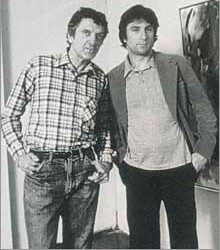
Much of DeNiro’s life did not include his father, and while the actor paid homage to his father at his 74th birthday, it appeared to be an emotional upheaval of regret. By looking at his father’s art, one can describe it subpar at best, and likely visions derived from an LCD rendezvous. While Deniro was very wealthy, his father remained poor. The story is his father was very involved in Deniro’s life, but considering he spend most of his life in Paris makes that hardly believable. But, we’ll let Deniro have his “memories”.




His uncle, John “Jack” Deniro died in 2015 and lists Robert and his wife Grace as his nephew. There are many pictures there of the family and several I put here with Deniro: https://www.remickgendron.com/obituaries/John-De-Niro/#!/Obituary





His cousin, Jean DiNero was the production assistance for “Raging Bull” and several other shows: https://www.imdb.com/name/nm0210585/
She lives in Manhattan, NY and married to Candace Sue Frede:
https://www.nytimes.com/2002/11/10/style/weddings-celebrations-jean-deniro-candace-frede.html
His cousin, Linda DeNiro lives in NY and is a licensed realtor in NY and FL as well as an interior designer: http://lindadeniro.com/about

His cousin, Dana DeNiro-Moulton lives in NH and owns a fashion boutique: https://lunachics.com/meet-our-staff-1

It appears his extended family are likely liberal but not involved in the sadistic pedophilia that Robert is dabbling in. Anyhow, back to the woman his parents wrote "erotica" for, Anaïs Nin, dropped out of high school at age 16 and became an "artist's model". She married Hugh Parker Guiller aka Ian Hugo, a filmmaker who did "experimental film" but eventually went into banking.

She also hooked up with Otto Rank, a close friend of Freud x20+yrs also a psychoanalyst, and she began to practice psychoanalysis in a room next to his by having sex with her patients on her psychoanalytic couch. She is "hailed by many critics as one of the finest writers of female erotica". Anaïs Nin eventually moved to LA. She was hailed by the feminazi movement and gave many lectures.

It is also said that she was bi-sexual. She had a long standing love affair with Henry Miller, an American writer who developed "a new type of semi-autobiographical novel that blended character study, social criticism, philosophical reflection, stream of consciousness, explicit language, sex, surrealist free association, and mysticism" and was an active member of the Socialist Party of America.
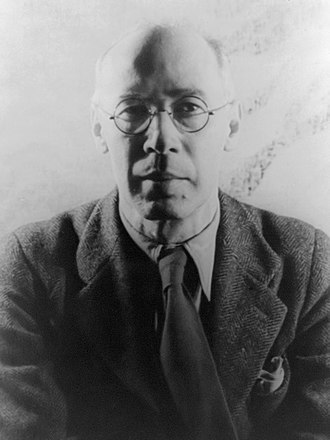
His book "Moloch: or, This Gentile World" is a semi-autobiographical novel originally said to be written by his wife June but it is "considered to be of interest more as a study of Miller's artistic growth than as a worthy piece of fiction". His work was very detailed descriptions of sexual encounters.
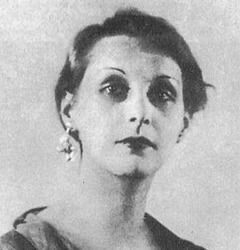
He was a pedo who liked much younger girls, marrying several of them. He also lived in LA and worked with Warren Beatty and had parties at his home for the artistic elite.


So, we have an idea of the upbringing Robert DeNiro had with socialists, communists, abstract art, erotica, Atheism, homosexuality, bisexuality, broken home, elitist environments, and MKULTRA (keep reading). His parents were not very involved in his life so he was left unsupervised often. He spent a lot of time with the homeless street kids. Per a family friend, “he wasn’t coddled much”. (sounds like MKULTRA conditioning- lack of attention and affection)

He was an introvert, very shy, and spent hours in silence. During his time alone, which was a lot, he wondered the streets of Little Italy in NY. “After school he took to wandering around the streets of Little Italy, past the sleazy bars and pool halls, and he joined a street gang on Kenmare. Gang members nicknamed him Bobby Milk, “because he was pale and strange as milk.” (Below he seems to be in a trance-like state)

When he was 16, he dropped out of high school. He had taken acting classes at “Stella Adler’s scene-study class.” after performing at the age of 10 in a school play as the Cowardly Lion in The Wizard of Oz.

In 1975 he explained that while his initial desire to act was for stardom, he eventually liked, “To totally submerge into another character and experience life through him without having to risk the real-life consequences—well, it’s a cheap way to do things you would never dare to do yourself.”
https://www.vanityfair.com/news/1987/10/robert-de-niro-life-story

Stella Adler was born in 1901 to a Jewish family, all of whom were actors. Her mother, Sara ( Sara Heine), was a Russian-born Jewish actress. She moved to NY in 1883 with her husband, Maurice. She spoke only Russian but learned Yiddish in the theaters. She married Jacob Adler in 1891 and, “She and Adler would be among the most prominent actors in Yiddish theater in New York for the next three decades.” https://en.wikipedia.org/wiki/Sara_Adler

Her father, Jacob ( Feivel (Pavel) Abramovitch Adler), was born in what is now known as the Ukraine. He had very little education, spent much time on the streets with petty crime, got into boxing, starting dancing, and eventually starting acting. He was a socialist. He had an affair with Jenny "Jennya" Kaiser and had Stella’s brother, actor Charles Adler. She is also sister of Luther Adler and cousin to Jerry Adler. https://en.wikipedia.org/wiki/Jacob_Pavlovich_Adler



Stella Adler started acting alongside her parents when she was 4. “The Adlers comprised the Jewish American Adler acting dynasty, which had its start in the Yiddish Theater District and was a significant part of the vibrant ethnic theatrical scene that thrived in New York from the late 19th century to the 1950s.” Much like her father, she had very little formal schooling and spent much of her time in the “theater”.

I am sure you wonder why I am detailing these people. Well, it appears by the many descriptions of their “art” that this may have been the early MONARCH MKULTRA institutions where children were brought in (remember, they preyed on children from broken homes or ones who had limited parental involvement- which is the case with Deniro) and brainwashed/controlled. This makes perfect sense now that we understand the means to mass brain control is through the media/movies/music. Acting studios make a perfect front! Take a look at the diagram below:

Stella joined a theater called Group Theater founded by Russian/Jewish actors/directors who had close ties to the Russian actor, Konstantin Stanislavski, from Moscow. It isn’t far fetched to assume they had ties to communists, more about that below. This theater began as the Actors Studio, a membership only theater that eventually became the Group Theater which used the strict practices called, The Method, derived from Stanislavski. Note: “Adler made her English-language debut on Broadway in 1922 as the Butterfly in The World We Live In.” (How MONARCH of them!)
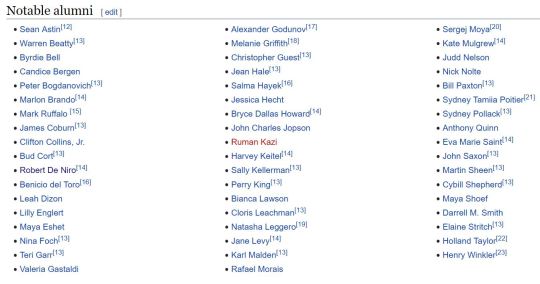
The Method, diagram above, refers to a strict process in which the actor becomes the part they are playing. There were “three teachers associated with "having set the standard of its success", each emphasizing different aspects of the approach: Lee Strasberg (the psychological aspects), Stella Adler (the sociological aspects), and Sanford Meisner (the behavioral aspects).” https://en.wikipedia.org/wiki/Method_acting

This group was led by Lee Strasberg and are connected to Yale Acting School and had great influence on the Chelsea Theater Center in NY. Remember, this is during the “McCarthy” era when everyone called him a “conspiracy theorist” regarding all the communists residing in America. In the 1950′s, many of the former members were called to testify in front of the House Un-American Activities Committee (HUAC). Several turned over on their communist leaders and connections: Elia Kazan, Clifford Odets, and Lee J. Cobb. Deniro says:

How “Crime Boss” of him! No chance he’s gonna sing like a canary. One of the people who exposed the communist ties to the group, Elia Kazan, said, “he abandoned his Communist views in part because of an agenda to transform the Group Theatre into a company devoted to promoting "Marxist ideology."
Look again at the names in this pic:

Lee Strasberg was born, Israel Lee Strassberg, a Polish-American. He is known in Hollywood circles as the "father of method acting in America". His third wife started the Lee Strasberg Theatre and Film Institute in New York City and in Hollywood. It continued the teaching “system”. Per Wikipedia: “The institute's primary stated goal was "to reach a larger audience of eager and emerging talent" than was served by the Actors Studio's notoriously selective admission process, and as teachers of the method began to deploy their own personal interpretations of the discipline, "to dispel growing confusion and misrepresentation of the method, preserving what had by now become fundamental discoveries in actor training."

The Lee Strasberg Theatre and Film Institute has its own rigorous sets of entrance criteria required for admission into their program and “Kazan, in his autobiography, wrote, ‘He carried with him the aura of a prophet, a magician, a witch doctor, a psychoanalyst, and a feared father of a Jewish home, was the force that held the thirty-odd members of the theater together, and made them 'permanent'” The actors and directors who were programmed, trained, brainwashed, whatever you wanna call it, are now doing the selecting of subjects and programming today (Ellen Burstyn, Al Pacino, and Harvey Keitel lead this nonprofit studio dedicated to the development of actors, playwrights, and directors.” https://en.wikipedia.org/wiki/Lee_Strasberg

As you can see, this is a whole other rabbit hole we need to jump down. MKULTRA is alive and well and has been working behind the guise of teaching acting. It makes sense, though, because isn’t acting a time when you become who you are told to be? Why do these actors perform their roles so well??? Because they ARE those roles! Their souls were abducted at a time they could not refuse and now they are running rampant in our society pretending to be one of us! Note the names identified above: Abromovitch and Marx.
Now that I have got your attention, get a drink...go pee...definitely pray...and give yourself some time to digest this chaotic, yet well orchestrated, evil mess before you start the next section which explains how the Mob ties into this whole shindig! Oh yes, Patriots, there is MUCH MUCH more! Muwahahahahahah!

So Deniro was sucked into the MKULTRA program as a young child. He was cultivated to operate for the Kabal and to do as he is told. He has no soul, as his precious soul was abducted long ago. He is a master of acting because, like the Matrix, he gets “plugged in” and “becomes” his role. His shadow is cold and dark. But, when and where and to whom was he conceived?
He was known as a womanizer and a partier who did drugs with many of the elite he worked with. He was known to be a d!ck to people he felt were subpar actors but this is noted about him, "De Niro was too obvious with his frustration with the actress cringing at her line readings. But he treated Jodie Foster, only 13 at the time, like a queen."

He spent a lot of time at the Chateau Marmont hotel where many elite stayed and partied including John Belushi and Scorsese, with cocaine their favorite drug. He is said to have had relations with @BetteMidler, Sally Kirkland, Carole Mallory, Helena Springs, and actress Barbara Carrera while he was still married to his first wife Diahnna (Toukie). It seems he attempted to land any woman who would let him...so he’s made his rounds in Hollyweird.



He has 6 children and in his old age has slowed down his partying but he has accumlated Quite a bit of wealth, even by Hollyweird standards and has acquired much real estate in NY and LA. Most importantly and equally intriguing...he is known as a frequent visitor of the Chateau Marmont Hotel in LA which is considered the Elite party spot where "anything goes" and he along with Robin Williams were there the night John Belushi "accidentally" OD'd on heroine and cocaine.


Remember, this is the same hotel @RepAdamSchiff is "suspected" to have dressed in drag and raped the 10yo child they "accidentally" killed by overdosing him with heroin then disposed of his body...and that Anthony Bourdain was there and "suicided" himself shortly after (@Johnheretohelp). Seems DeNiro is closely linked to this hotel alon with many other actors for many years, since the 70's.

His acting career started with a very close relationship with Scorsese. Deniro and Scorse grew up in Little Italy in NY together and DeNiro was part of the Kenmare gang. This is considered a "tame" gang but he did grow up in the area of NY where all the BIG crime families were. "De Niro has also been connected by some to the Gambino crime family."
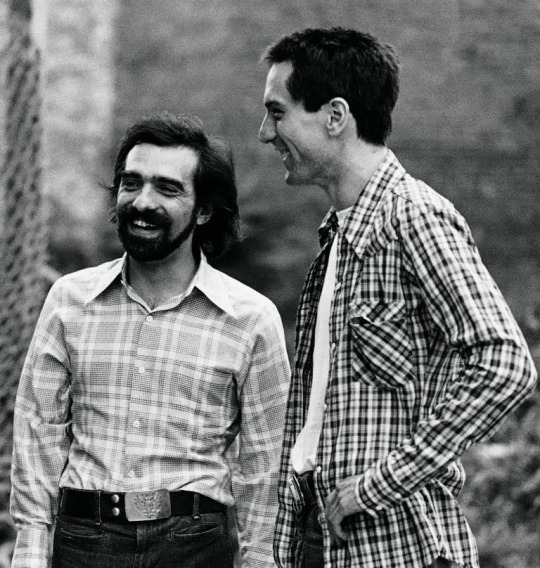
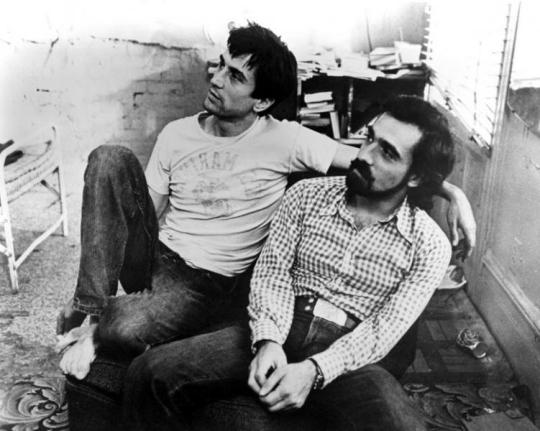

De Niro is one of the "GoodFellas" actors to hang out members of the Gambino family, "De Niro consulted with the late Gambino soldier Anthony (Fat Andy) Ruggiano for is role in "Analyze This". Ruggiano was involved in at least seven murders, including his son-in-law.

Frank Sivero "posed for photos at Gambino hit man Charles Carneglia's junkyard, and actor Anthony Borgese was indicted for participating in an extortion with a Gambino soldier." DeNiro introduced to Gambino by Anthony Corozzo a Gambino associate AND mbr of Screen Actors Guild!

Gambino boss, Nicholas "Little Nick" Corozzo, is brother to Anthony. Their two brothers: Joseph "Jo Jo" Corozzo a Gambino consigliere and Blaise Corozzo a Gambino soldier. The Gambino family is connected to the Screen Actors Guild! There is a long history of mobs and Hollyweird.

De Niro claims he does not remember meeting Ruggiano because it was so long ago: https://www.thechicagosyndicate.com/search/label/Anthony%20Corozzo?m=0
Denior has been seen photographed with sketchy characters we know worship satan, do spirit cooking, kill and eat babies while sacrificing them to their pagan gods. The #1 witch in particular is MARIA Abromovitch. (Notice that name is bolded above), Bill Clinton, and Jay Z.

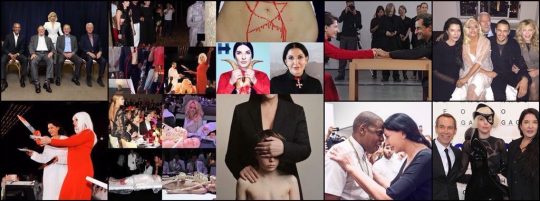

Deniro was a part of the Harvey Weinstein collapse because Harvey took "very young" girls to Deniro's restaurant Tribeca Grill and even assaulted the employees there too. Hey Bobby Milk, ur friends define you...didn't you know that???


Recently he was found attending functions with Purple Magazine (connected to Rachel Chandler) and posing with a known pedophile and sex offender, Terry Richardson.




Finally, in studying the family history, I find the DeNiro crime family in Illinois, Ohio. Remember above, his mother lived there before moving to Berkeley, California and much of her family history is in Illinois. The Wikipedia says she was born in Oregan, lived in Illinois, then moved to Berkeley. The connection of his mother to Illinoise where the DeNiro crime family lived cannot be ignored.
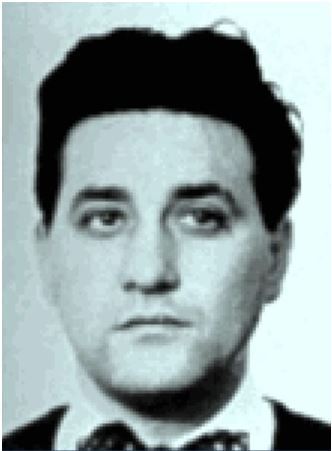
James V. “Vince” DeNiro was a notorious Youngstown, Ohio mob associate and gambling boss. He was born 1922 and died in 1961 from a car bombing. DeNiro was considered handsome and debonair and known as one of Youngstown’s “policy Kings”. He ran the Dry Men's Social club and owned the Cicero restaurant. “DeNiro became one of the leading underworld figures in the Mahoning Valley during the 1950s and early 1960s and was heavily involved in the numbers racket.” His rival was of the Naples family, Joseph "Sandy" Naples both vying to be the “top mobster in Youngstown beginning in the early 1950s.”
He had close ties to the Cleveland crime family: Calogera Malfitano considered to be his mentor; "Cadillac Charlie" Charles Cavallaro, and "Tony Dope" Anthony Delsanter. His rival, Sandy Naples and his girlfriend was gunned down in 1960 and it was believed he was behind it. Naple’s brother, Billy Naples, was killed the following year in a car bombing. He surrendered to police but was not charged due to lack of evidence. Not sure, but he looks an awful lot like Robert “Bobby Milk” DeNiro: https://mafia.wikia.org/wiki/Vince_DeNiro
youtube
It is interesting to note, Vince’s great nephew is Vincent L. DeNiro and he is involved with special effects and stunts for movies. He has an interesting history but most notably he speaks Ukranian and does “Theatrical Armorer for Hollywood, Expert Witness - Firearms (accidents, movie industry, faulty design issues, etc.), commercial sales, military and LE contracts, and distribution. Have I “done it all” in the firearms industry? Well, just about everything!” He was also a deputy sheriff in Youngstown, OH as well he notes that he “ led the defeat of the first city “assault weapon” ban in the U.S. in 1989, which made national headlines.” https://www.linkedin.com/in/vincent-l-deniro-501311b

His brother, Louis DeNiro, was noted in his obituary to have been a member of St. Anne Ukrainian Catholic Church in Austintown:
https://www.findagrave.com/memorial/148374810/louis-r-deniro
The Ukraine connection is because he is married to Katherine Danylyk which is a Ukrainian last name and her uncle died in Texas: https://www.legacy.com/obituaries/houstonchronicle/obituary.aspx?n=michael-danylyk&pid=159897791&fhid=10889

His brother is William DeNiro, also deceased and is noted to have a grandson named “Robert”, maybe just a coincedence, but there is a striking resemblance of DeNiro, his dad, and his uncle to this family in Illinois:
https://www.findagrave.com/memorial/146664719/william-paul-deniro

Continued digging needed to see if a connection can be made! Stand by for updates.
Thanks,
BelleauSkye Anon
2 notes
·
View notes
Photo

🚬 The Freud Reader: https://bit.ly/32pEiuL - free delivery worldwide
What to read from the vast output of Sigmund Freud has long been a puzzle. Freudian thought permeates virtually every aspect of twentieth-century life; to understand Freud is to explore not only his scientific papers-on the psycho-sexual theory of human development, his theory of the mind, and the basic techniques of psychoanalysis-but also his vivid writings on art, literature, religion, politics, and culture.
The fifty-one texts in this volume range from Freud's dreams, to essays on sexuality, and on to his late writings, including Civilization and Its Discontents. Peter Gay, a leading scholar of Freud and his work, has carefully chosen these selections to provide a full portrait of Freud's thought. His clear introductions to the selections help guide the reader's journey through each work.
Many of the selections are reproduced in full. All have been selected from the Standard Edition, the only English translation for which Freud gave approval both to the editorial plan and to specific renderings of key words and phrases.
🚬 The Freud Reader: https://bit.ly/32pEiuL - free delivery worldwide
The 🐧 Penguin Freud Library ♡ Free delivery worldwide:
👁️ Interpreting Dreams: http://bit.ly/2gr1rtP
🙈 🙉 🙊 Mass Psychology and Other Writings: http://bit.ly/2xM5FP3
😂 The Joke and its Relation to the Unconscious: http://bit.ly/2hMyPaV
🚬 The Psychopathology of Everyday Life: http://bit.ly/2yuJlNF
🔪 On Murder, Mourning and Melancholia: http://bit.ly/2yQlidv
📚 An Outline of Psychoanalysis: http://bit.ly/2gbe8st
❤ The Psychology of Love: http://bit.ly/2gi7b5m
📣 Civilisation and Its Discontents: http://bit.ly/2ytoqZz
😱 Studies in Hysteria: http://bit.ly/2ihLS8g
🐺 The ‘Wolfman’ and Other Cases: http://bit.ly/2xLtSVR
🐎 Wild Analysis: http://bit.ly/2giXfZo
🤔 The Uncanny: http://bit.ly/2zvSAM0
⚫ The Unconscious: http://bit.ly/2yuoQR0
The 🐧 Freud Reader: http://bit.ly/2zvMriM
7 notes
·
View notes
Text
Participants
Benjamin Noys is Professor of Critical Theory at the University of Chichester. His research focuses on contemporary Continental theory, cultural politics, literature, and avant-garde and popular culture. His books include Malign Velocities: Accelerationism & Capitalism, The Persistence of the Negative: A Critique of Contemporary Continental Theory, The Culture of Death and Georges Bataille: A Critical Introduction. He also edited Communization and its Discontents and has numerous essays on topics such as anti-critique, the aesthetics of financial crisis, drones, time, Ballard, vampies, neurosis and Brexit.
Hannah Proctor works on revolutionary psychologies, communist neurologies and red therapies. She’s broadly interested in intersections between left-wing politics and psychology, histories and theories of radical psychiatry, and emotional histories of the Left. She’s currently a fellow affiliated with the ICI Berlin. Her forthcoming book, Psychologies in Revolution: Alexander Luria, Soviet Subjectivites and Cultural History, situates the innovative cross-disciplinary clinical research of Soviet psychologist and neurologist Alexander Luria in its politicised historical context. She is also working on a book project for Verso on the psychic aftermath of political struggle. She has an ongoing project on femininity and hardness – with the working title 'Stone Femme.’
Leon Brenner is a post-doc fellow at the University of Potsdam, specializing in the fields of Lacanian psychoanalysis, contemporary French philosophy and autism research. Brenner has previously worked on the subject of Alain Badiou’s theory of subjectivity and love. His doctoral dissertation—conducted at Tel-Aviv University and the Freie Universität, Berlin—concerned the subject of autistic subjectivity in psychoanalytic thought. Today Brenner works on the subject of the anthropological philosophy of autism at the University of Potsdam's institute for philosophy. He is a founder of the Lacanian Affinities Berlin group (laLAB) and teaches courses on the subject of psychoanalysis in Berlin.
Kerstin Stakemeier is a Professor for Art Education at the Academy of Fine Arts in Nuremberg. She has been teaching since the early 2000s in the fields of political, art, cultural and media theory, art history and on topics of artistic and political theory and practice as well as modern, postmodern and contemporary history of exhibition practice. With others she is the initiator of the long-term exhibition, magazine and discussion project Klassensprachen / Class Languages (from 2017). She has published, among others, "Painting-The Implicit Horizon" (2012) with Avigail Moss and "Power of Materials/Politics of Material” and “The Present of the Future“ (2014-16) with Susanne Witzgall. She writes among others for Artforum and Texte zur Kunst. In 2016, she published Reproducing Autonomy with Marina Vishmidt.
Jule Govrin is a philosopher; her research is situated at the interface of political theory, social philosophy, and aesthetics. She holds a PhD from the FU Berlin on the history of the theory of desire and economics. She investigated how the notion of desire is linked to economic theories in the history of philosophy. She currently works at the Philosophical Seminar at the European University of Flensburg and investigates the relationship between authenticity and authority in the political history of ideas of modernity and late modernity. She is the author, in German, of Sex, God and Capital: Houellebecq’s Subjugation between Neoreactionary Rhetoric and Post-secular Politics and, in addition to her academic work, is also active as a journalist, e.g. for »ZEIT Online«.
Luce de Lire is a ship with eight sails and she lays off the quay. A time traveller and collector of mediocre jokes by day, when night falls, she turns into a philosopher, performer and media theorist. She loves visual art, installations, video art etc. She could be seen curating, performing, directing, planning and publishing (on) various events. She is working on and with treason, post secularism, self destruction, fascism and seduction – all in mixed media.
Samo Tomšič obtained his PhD in philosophy at the University of Ljubljana, Slovenia, and is currently research associate at the Humboldt University in Berlin. (Although from next week, he will be a Professor at the Academy of Fine Arts in Nuremberg.) His research areas comprise contemporary European philosophy, structuralism and poststructuralism, psychoanalysis (Freud and Lacan), epistemology, and political philosophy. His publications include The Labour of Enjoyment: Towards a Critique of Libidinal Economy (2019), The Capitalist Unconscious: Marx and Lacan (2015). Plus two edited books, Psychoanalysis: Topological Perspectives: New Conceptions of Geometry and Space in Freud and Lacan (ed. with Michael Friedman) and Jacques Lacan. Between Psychoanalysis and Politics (ed. with Andreja Zevnik, 2015).
Dominiek Hoens is a philosopher and doctor of psychology, and teaches philosophy of art at two university colleges in Belgium. Recent publications include articles on the logic of the Lacanian ‘not-all’ (in Crisis and Critique) and on Lacan and Pascal, and a chapter on Lacan in the forthcoming Routledge Handbook of Psychoanalytic Political Theory. Currently, he is co-editing with Sigi Jöttkandt a special issue of their journal, S, on Duras and Lacan.
Julie Gaillard was recently appointed as an Assistant Professor in the Department of French & Italian at the University of Illinois. She was previously a fellow at ICI Berlin. She co-edited the volume Traversals of Affect: On Jean-François Lyotard (Bloomsbury, 2016). Her current research continues her investigation of Lyotard’s work and its import at the crossroads of philosophy, psychoanalysis, literature, arts, and politics.
Daniel Tutt is a Professorial Lecturer at George Washington University. His academic training is in philosophy and religion with a focus on contemporary continental philosophy, the history of philosophy, Lacanian psychoanalysis and ethics. His interests include Marxism and post-Marxist thought, contemporary social and political movements, political Islam, Islamophobia, Islamic philosophy, historicism and the philosophy of history and post-Lacanian thought. He has published articles on Badiou, Zizek, Islam and contributed to the recent edited volume, Sex and Nothing: Bridges from Psychoanalysis to Philosophy.
Adriana Zaharijević combines political philosophy, feminist theory and social history of the 19th century. She is a senior researcher at the Institute for Philosophy and Social Theory at the University of Belgrade, and an assistant professor at the University of Novi Sad. She is the author of more than sixty articles and two books, unfortunately not (yet) available in English – Becoming Woman (2010) and Who is an Individual? Genealogical Inquiry into the Idea of a Citizen (2014). Among other essays in English, she has a forthcoming paper on Robinson Crusoe, invulnerability and bodilessness.
Sami Khatib is an Assistant Professor of Visual Arts at the American University in Cairo. Sami's research spans the fields of Aesthetic Theory, Critical Theory, Visual Arts, Media Theory, and Cultural Studies with a special focus on the thought of Walter Benjamin. He is a founding member of the Beirut Institute for Critical Analysis and Research (BICAR). His ongoing research project “Aesthetics of the ‘Sensuous-Supra Sensuous” examines the aesthetic scope and political relevance of Marx’s discovery of the commodity form. His publications include articles on violence, pedagogy, the aesthetics of real abstraction, temporality and Walter Benjamin.
Jason Read is a Professor of Philosophy at the University of Southern Maine. He specialises in the areas of Social and Political Philosophy, 19th and 20th Century Continental Philosophy, Critical Theory, Philosophy of History, Spinoza. His two books are The Politics of Transindividuality (Brill, 2015) and The Micro-Politics of Capital: Marx and the Prehistory of the Present (SUNY, 2003). He has many articles and book chapters on topics including work, affect, precarity, Balibar, ideology and Althusser.
Vladimir Safatle holds several international appointments. Primarily, Vladimir is Professor of Philosophy and Psychology at University of São Paulo. He is also a visiting scholar at UC Berkeley. Invited professor at Université de Paris VII (Department of Psychoanalysis), Paris VIII (Department of Music), Toulouse (Department of Philosophy) and Louvain (Department of Philosophy). Fellow of Stellenboch Institute for Advanced Studies (South Africa) and formerly responsible for seminars at Collège International de Philosophie. Vladimir is the author of Grand Hotel Abyss: Desire, Recognition and the Restoration of the Subject (Leuven, 2016) and many further texts in English, as well as Portuguese and French. He is responsible for the new Brazilian edition of Theodor Adorno's complete work and is a coordinator of the International Society of Psychoanalysis and Philosophy. He has published essays on Hegel, Adorno, desire, servitude, democracy and Lacan. He is also an outspoken critic in Brazilian media of Bolsonaro and the turn to far-right politics.
Todd McGowan teaches theory and film at the University of Vermont in the US. He has just published Emancipation after Hegel: Achieving a Contradictory Revolution (2019). His previous books include Only a Joke Can Save Us: A Theory of Comedy (2017), Capitalism and Desire: The Psychic Cost of Free Markets (2016), Spike Lee (2014), The Fictional Christopher Nolan (2013), Enjoying What We Don’t Have: The Political Project of Psychoanalysis (2013), Rupture: On the Emergence of the Political (2012, with Paul Eisenstein), The Real Gaze: Film Theory After Lacan (2007), and The Impossible David Lynch (2007).
Yahya M. Madra is an associate professor of economics at Drew University, Madison, NJ. He has been a member of the editorial board of the journal Rethinking Marxism since 1998 and served as an associate editor of the journal between 2010-12. He specialises in the History of Economic Thought; International Political Economy; Political Economy and Cultural Formations; Psychoanalysis and Capitalism and Current Heterodox Approaches. He has published and co-authored articles on various issues in political economy and on the history of recent economics in edited book volumes and a number of academic journals in English and Turkish. His first book in English is LATE NEOCLASSICAL ECONOMICS: RESTORATION OF THEORETICAL HUMANISM IN CONTEMPORARY ECONOMIC THEORY from 2017.
Ceren Özselçuk is an Assistant Professor of Sociology at Boğaziçi University, Istanbul. She has recently published and co-published in journals such as South Atlantic Quarterly, Psychoanalysis, Culture & Society, Rethinking Marxism, and in edited volumes. She is on the editorial board of the journal Rethinking Marxism and also its current managing editor. She and Yahya are working on a book manuscript related to their talk today. She is also developing research on the associations among populism, neoliberalism and neo-conservatism, with a geographical focus in Turkey, and interrogating the relations between populism and contemporary forms of authoritarianism and violence, on the one hand, and the role of populist identifications both in democratic as well as neoliberal transformations, on the other.
Merritt Symes (www.merrittsymes.com) is a video artist who creates audio-visual “resonance machines” from both found and original footage. Her short films are concerned with creaturely lives, uncanny affinities, impersonal intimacies, the unraveling of forms, and the spaces between things. Dominic Pettman (www.dominicpettman.com) is Professor of Culture & Media at Eugene Lang College and The New School for Social Research. His numerous books include Sonic Intimacy, Creaturely Love, and Metagestures (with Carla Nappi).
Margret Grebowicz’s writings on mountaineering have appeared in The Atlantic, The Philosophical Salon, and the minnesota review, and she is currently writing her next book, Mountains and Desire, for Repeater. She is the author of Whale Song (Bloomsbury), Why Internet Porn Matters and The National Park to Come (both Stanford), and co-author of Beyond the Cyborg: Adventures with Donna Haraway (Columbia). She teaches philosophy and environmental humanities at the School of Advanced Studies, University of Tyumen, in Siberia.
Ania Malinowska is Assistant Professor at the University of Silesia, Poland and former Senior Fulbright Fellow at the New School of Social Research in New York, USA where she was working on a research project “Feeling(s) Without Organs. Love in Contemporary Technoculture”. She is a coeditor of (with Karolina Lebek) Materiality and Popular Culture. The Popular Life of Things (Routledge 2017), (with Michael Gratzke) The Materiality of Love. Essays of Affection and Cultural Practice (Routledge 2018), and (with Toby Miller) “Media and Emotions. The New Frontiers of Affect in Digital Culture” (a special issue of Open Cultural Studies, 2017). She has authored many papers and chapters in cultural and media studies regarding love, social norms, codes of feelings and technology.
Matthew Flisfeder is an Associate Professor of Rhetoric and Communications at The University of Winnipeg. He is the author of Postmodern Theory and Blade Runner (2017), The Symbolic, The Sublime, and Slavoj Žižek’s Theory of Film (2012), and co-editor of Žižek and Media Studies: A Reader (2014). He recently completed his new book, Algorithmic Desire: Towards a New Structuralist Theory of Social Media. He is currently working on a project that examines the aesthetics, rhetorics, and ethics of new materialist, posthumanist, and accelerationist theory.
Ben Gook is an Alexander von Humboldt Foundation Postdoctoral Fellow at Humboldt University, Berlin. He is also an honorary fellow at the School of Social & Political Sciences and the ARC Centre of Excellence for the History of Emotions at the University of Melbourne. His books include Divided Subjects, Invisible Borders: Re-Unified Germany after 1989 (Rowman & Littlefield International, 2015) and the forthcoming Feeling Alienated: How Alienation Returned in Contemporary Capitalism (Cambridge UP, 2020).
3 notes
·
View notes